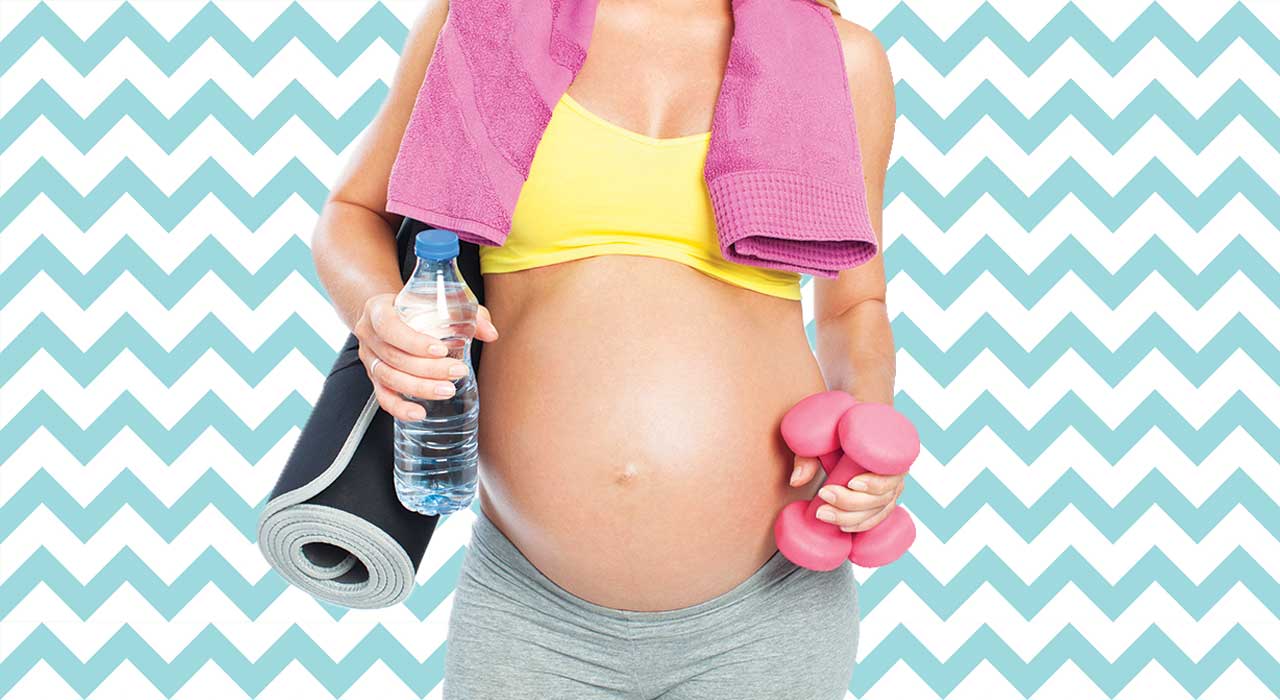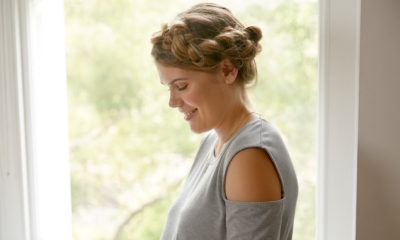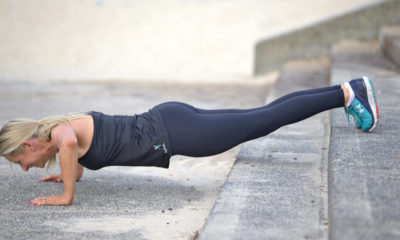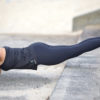Health
Everything You Need To Know About Being Pregnant And Healthy
It’s the one time in your life you actually want your belly to grow because that means your baby is growing too. And yet you don’t want to lose all that hard-won fitness and muscle. Plus, there’s your post-baby body to consider. Ideally, you want to bounce back into shape easily so you can throw out those elasticized trousers and slip back into your skinny jeans.
But there are more important reasons to keep up with exercising – it’s also best for baby’s and your health during and after pregnancy, and it even makes labor easier. And surely everyone would want that. But you can’t simply stick to the same workout.
Whether you’re expecting or you expect to be expecting one day, pregnancy needn’t stop you pumping iron. You just need to understand the changes your body will go through and how they affect your workout. Here’s your blueprint for bringing new life to your body and your new arrival.
Calories still count
The first big difference between working out when not pregnant and when you’re expecting is your calorie intake and usage. If you’re a healthy weight to begin with, you don’t need to ‘eat for two’, doubling your calorie intake, but you do need to take more in, especially after the first trimester. For example, in the second trimester your baby uses up to an extra 300-350 calories each day, on top of what you usually get, which means you need to eat a healthy and substantial diet so your baby grows. In the third trimester, that calorie need increases to 500 per day. And if you’re expecting twins or triplets, you’ll need to increase your intake even more.
Take it easy
So, as you up your calorie intake, the way you exercise is also affected.“You might be glad to hear that doing high-intensity impact training (HIIT), like sprints or insanity workouts, are out of the question!” explains Robyn Ablott, pre- and post-natal exercise specialist at the Female Fitness Academy (femalefitnessacademy.co.uk).
“It’s recommended, however, that women get 15-30 minutes of low-impact aerobic exercise three to four times a week while pregnant. Depending on your fitness level at the start of pregnancy, you should aim to work between 6-8 on a scale of 1-10 in terms of intensity, and always be able to maintain a conversation without becoming too breathless.”
Feed your efforts
It’s also extremely important you support energy levels with regular snacks. “Make sure you’ve eaten within an hour before training, and eat a post-workout snack or meal as soon as you can after you exercise,” says Ablott. She suggests eating some carbs and protein. For example, a chopped apple topped with slices of cheese. Without food in your system you can quickly become dizzy and risk fainting. The good news, though, is that by exercising you’re less likely to suffer with dreaded pregnancy-related constipation so you can enjoy your food without worrying about being ‘backed up’ for days.
Hydration is key
Drinking more is also something to consider. Not alcohol, obviously, but water and juice. “While pregnant, your core temperature will be raised more than usual, and this means you’ll sweat more,” says Ablott. “Therefore, it’s important you drink a glass of water before and after exercise, and drink one cup every 20 minutes of training. Be aware, also, that you’ll need to sip more if you’re working out in warmer temperatures.” If you’re pregnant during summer months, be aware you need to consider drinking more water and keeping cool generally. A bit of sweating is OK, but you shouldn’t allow yourself to get too hot. Your body is already dealing with changes that raise your temperature during pregnancy – a higher blood volume, carrying extra weight and the uterus pushing your heart to one side as it grows, making it work harder to get all that blood pumping to your organs, limbs and growing baby.
Stick with what you know
So you know that hard-core aerobic workouts are out for now, but don’t give up on all your usual exercises. It’s a good idea to stick to more or less the same or similar exercises on a somewhat reduced level. So get on the treadmill or stationary bike, but don’t hammer it home like you usually do.This kind of exercise will help you sleep better and less likely to gain excess weight, something that can put extra pressure on your body and make childbirth more difficult. As for weightlifting, you’ll need to make some other pregnancy-related changes too – for your muscles and your blood flow.
Standing still for a long time while pregnant can cause blood to pool in your feet and ankles and decrease blood flow to the uterus, which isn’t good for your baby. That means exercises like the static plank or other isometric moves are best avoided, or if you do them, do one set then take a couple of minutes break to walk around, before doing another set. Starting to feel dizzy is a sign you’ve been still for too long. After the first trimester, you should also avoid or adapt exercises that require you to lie on your back. This can put pressure on the vena cava, a major vein which transports blood to your heart. You can continue lifting weights though.
Research published in the Scandinavian medical journal Acta Obstetricia et Gynaecological Scandinavica followed a group of pregnant women, some of whom did supervised vigorous resistance training exercises for an hour twice a week, while the others did standard exercise recommendations (light exercises, for example). The results showed no adverse effects on blood pressure or childbirth.
The key here is that the women did ‘supervised’ training. You might consider enlisting a trainer, specialist or even simply a partner who can watch you as you lift. Pregnancy can make it diffcult to maintain balance and that can be a serious issue when lifting. Having someone to spot you means you’re less likely to suffer an injury.
Muscles that change
Some of your muscles change more than others during pregnancy and you need to pay particular attention to how you exercise them. For example, your abdominal muscles.
“The rectus abdominis (your six-pack) will stretch to accommodate your growing baby,” Abbot says. “This
can cause a separation of the connective tissue that runs through the middle of this muscle. Unfortunately, many women, either during pregnancy or soon after childbirth, do unsafe abdominal exercises. Any exercise which increases downward pressure in the abdomen can worsen a weakened pelvic floor and increase abdominal separation.” Ablott advises all her clients to avoid certain exercises during pregnancy and until well after childbirth, or until they’ve strengthened their pelvic floor and core.
Your joints are already under more pressure because of the extra weight you’re carrying, so it’s best to avoid very heavy weights. Something else to consider is that during pregnancy, and especially before birth, a substance called relaxin is released. This allows your body to accommodate your new shape, and it also lets your cervix and uterus relax enough to allow the baby out, when that times comes. Trouble is, it also makes your joints more wobbly, so you need to take extra care when doing exercises that involve balance or standing in general, especially when holding weights.
Life for both of you
So with all this advice and exercise no-nos you might think it’s easier and safer simply to quit working out. Don’t! Your baby’s supply of nutrients is reliant on your cardiovascular system, since all the nutrients you take in get transported to your baby via your blood stream, so if your veins, arteries and heart aren’t in great working order, your baby will suffer.
Exercise also allows you to focus on strengthening your body to make pregnancy easier. Backache, for example, is common when you’re pregnant because your core muscles have to work harder to maintain your posture. “The focus of a pregnancy exercise program should be on maintaining correct posture alignment, avoiding excess weight gain, maintaining muscular strength/ endurance and strengthening the core and pelvic floor muscles,” says Ablott.
Focus on aerobic exercise to keep your cardiovascular system in good shape: do light to moderate walking on the treadmill, for example, or go swimming or cycling so that your joints are under less pressure, and also maintain muscle strength. “You should aim to perform light-moderate resistance training for around 30 minutes, two to three times per week,” says Ablott. “Concentrate on large muscle groups, and as pregnancy progresses into the third trimester you can shorten these workouts.”
Easy come easy go
If looking after your joints, keeping you and your baby healthy with a strong cardiovascular system and less back ache isn’t enough of an incentive to keep you exercising, consider the bene ts of an easier labor. Research in the American Journal of Obstretics and Gynecology found athletes who exercised regularly at 50% or above of their pre-pregnancy effort were at lower risk of abdominal or vaginal interventions during childbirth, compared to those who didn’t.
While this research is based on female athletes, whose bodies are trained differently to an average gym-goer, it’s likely that maintaining fitness in general will have similar effects. That means you’re less likely to have to undergo a forceps delivery or the dreaded cut (episiotomy)! And – here’s the big one – labor itself was found to be shorter for athletes who kept up with their training.
“In my own experience of childbirth and with many of my clients, I’ve found exercise certainly does help!” says Ablott. “Childbirth can be seen as a marathon. It’s physically and mentally exhausting. You wouldn’t attempt to run a marathon after having performed no training.”
So consider your pregnancy a long-term training program towards your toughest workout: childbirth. Work on strengthening your joints and keeping them flexible. Keep your cardiovascular system in great working order, maintain strength in your core for good posture and focus on your legs and pelvic joints, so when the times comes you can push that baby out easily!
Flex those skeletal hinges
Your joints are under a lot more pressure during pregnancy. During childbirth it helps a lot to
be flexible around the hips, knees and thighs. Squatting is one of the quickest ways to deliver a newborn and requires flexibility and strength, not to mention stamina, so stick to these exercises while pregnant to make it easier.
Butterflies:
Sit with your rear on the floor and the soles of your feet touching each other. Feel the stretch, then raise your knees. You can rest your arms on your knees to deepen the stretch.
Squatting:
Doing a squat during labor can open you up an extra centimeter or so, making it easier to give birth. Lean against a wall with your feet hip-width apart and slowly slide down until your thighs are parallel with the ground. Hold for 10 seconds, stand again and take a breather. Repeat 10 times.
Pelvic tilt:
Get down on all fours, pull in your stomach, hold for a few seconds and then relax (don’t allow your pregnant belly to sag). This will help prevent back pain and make delivery easier.
Exercises to avoid
Some exercises should be struck off your list completely because they put you or your baby at risk of injury. “Even if you don’t have abdominal separation, the exercises to the right could create one,” says Ablott. “If you have a separation, they’ll almost definitely delay healing or make it worse; say hello to problems like prolapses, hernias and back pain. Not ideal, ladies!”
Avoid all of the following:
- Crunches
- Sit-ups
- Other advanced abdominal exercises such as leg lifts
- Burpees
- Full press-ups
- Unmodified planking exercises
- High-impact exercises (ie, squat jumps, jumping lunges, sprinting, skipping etc)
Find pregnancy advice and more in every issue of TRAIN for HER magazine.






















